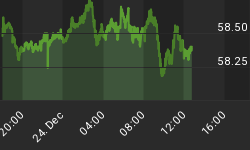Every credit boom ends with a bust. Although it is impossible to predict the precise timing of an impending recession, one can look out for certain danger signals. Let us begin with the fallacy that consumer spending drives economic growth. It ought to be patently obvious that one cannot consume what has not been produced. In other words, consumption follows production and is its raison dêtre. In turn, it is the existence of capital goods, i.e., machinery, factories, power stations, etc, that makes the vast production of consumer goods possible.
The more capital goods we accumulate the greater the quantity, quality and range of consumer goods and services that can be produced at lower real prices. Now it is axiomatic in economics that opportunity cost is the true cost of anything; meaning that what we sacrifice to obtain any object or goal is its true cost. If I choose world trip to a car than the real cost of the trip is the car and its forgone services. It follows that whatever is consumed cannot be invested. Thus economic growth is forgone consumption, which is commonly called savings. Hence, if there are no savings then the phenomenon of capital consumption emerges.
Statistics tell us that Americans have all but abandoned the habit of saving. I have grave doubts that this is the case. I'm betting that if we take into account pension funds and capital gains we shall find that savings are still positive. Some commentators argue that the so-called 'wealth effect' encouraged American to borrow and spend. Whether people cease saving because they feel wealthier is neither here nor there. What matters in this respect is the source of the spending.
There can be no doubt that the Fed's easy money policy has considerably expanded credit. It is this credit expansion that fuelled the boom and thus consumer spending by raising nominal incomes and funding the rise in household debt, just as in Australia. Therefore, when the party comes to an end consumer spending will drop.
But why must the party stop? Because nothing is for nothing. The Fed's credit expansion set loose economic forces that it does not even acknowledge, let alone control. By using credit to stimulate output it has misdirected production by distorting interest rates. This has caused a lot of companies to embark on otherwise dicey projects because easy credit has misled them into thinking that current demand justifies the investment. What this means is that investment is exceeding savings. The other name for this process is inflation
When people save they indirectly shift resources from consumption to the production of capital goods (future goods) and it is this process that increases future output. On the other hand, to reduce the flow of savings means directing resources to current consumption which will then lower investment causing future living standards to be lower than they would otherwise be.
Companies used the Fed's cheap credit to hire labor and buy goods and services. These expenditures translated into incomes which were spent on consumption. But as we have seen, the effect of raising the demand for consumer goods is to direct resources away from investment. Not only that, these nominal incomes raise the demand for goods which in turn aggravates the current account deficit.
In order for so-called cheap money to stimulate production firms must expect profits to rise. If their profit margins are kept extremely low by a severe tax regime and onerous regulations and law it is unlikely that even an extremely low interest rate could create a climate that would favour increased investment. (The 1930s is a graphic example of government policies prolonging a depression). Moreover, even if the will to invest is present tax cuts that spur consumption might trigger a consumer spending spree rather than an investment boom. We would then witness the phenomenon of manufacturing sector (the higher stages of production) in depression while consumer industries appear to flourish. This would then give rise to the myth of the "dual economy".
However, if the government were to significantly cut capital gains taxes this could lead to a surge in investment and production. The reason is that capital gains are in fact profits and the market, irrespective of what Democrats say, abhors profits. That's why market processes always move to eliminate profits when ever they emerges. It's clear, therefore, that cutting capital gains taxes raises the amount of capital available for investment.
It follows that once the economy picks up steam the stock market will begin to rise. But while such rises are healthy in themselves one should bear in mind that excess credit is much like excess water, it must find an outlet. Every credit boom I know of eventually triggered a stock market boom that inevitably resulted in a speculative frenzy, sometimes causing stock prices to reach stratospheric levels. One is reminded of the dot.com bubble that broke so many people. Sooner or later the good times must come to an end.
When the necessary economic adjustments are finally made people will once again blame a stock market crash for the recession. And once again they will be wrong. In July 1929, some five months before the October crash, the American economy was already shown distinct signs of an emerging depression: manufacturing was slowing down, output was falling, layoffs rising and capital utilisation was declining. Yet despite the lessons of history and the groundbreaking work of the Austrian school of economics commentators still blame the market.
Instead of trying to divine the intentions of the Fed one would be better rewarded by playing close attention to what is happening in the higher stages of production. As for the P/E, this can be misleading during a boom. Never forget that in a boom values are inflated. This means that thought the P/E might look reasonable it could in fact be masking an unhealthy state of affairs. Once the boom busts these inflated values evaporate, regardless of their P/Es.
















